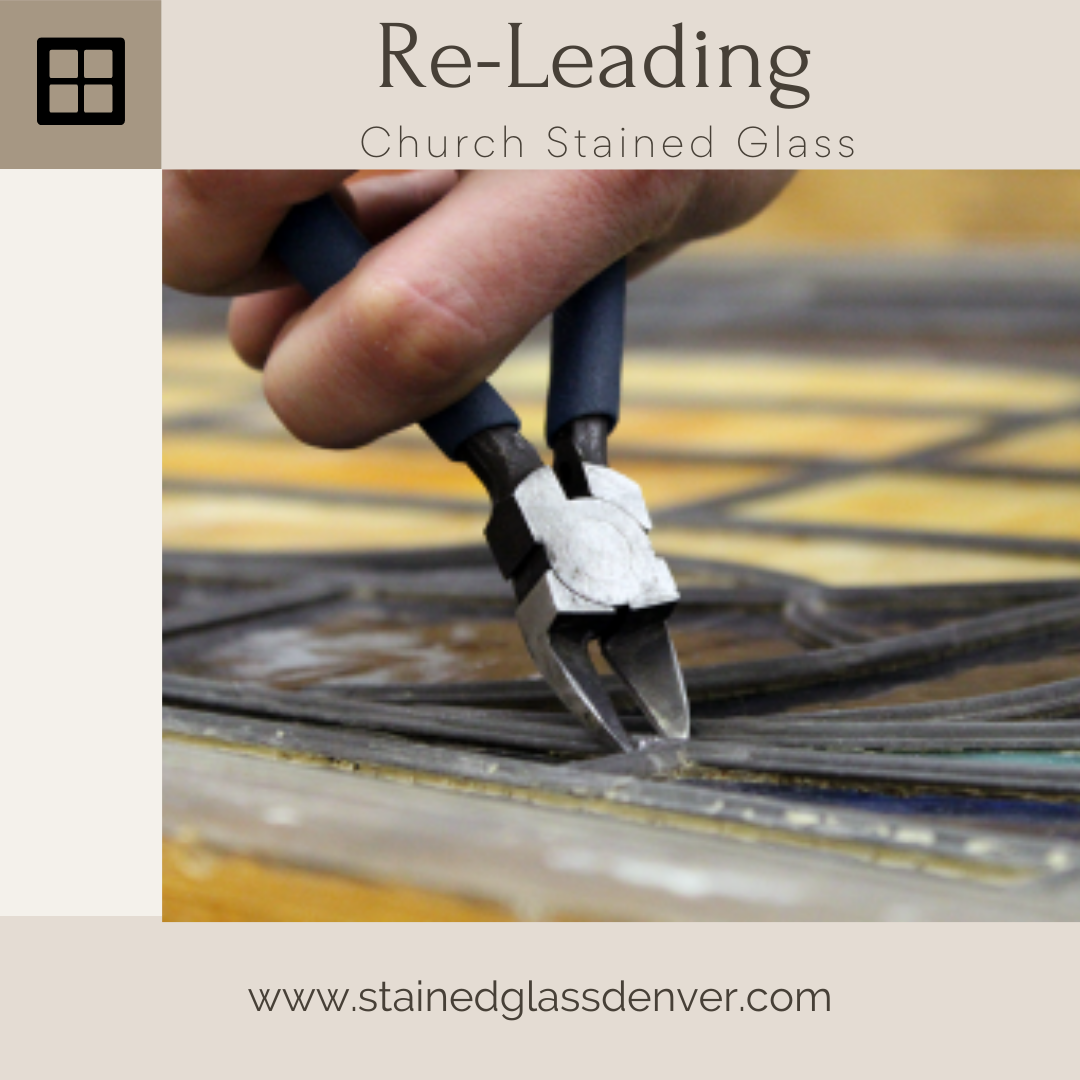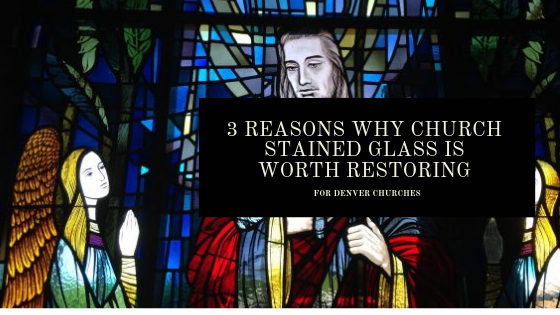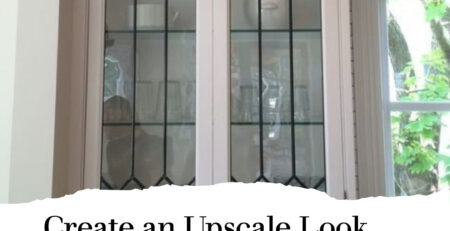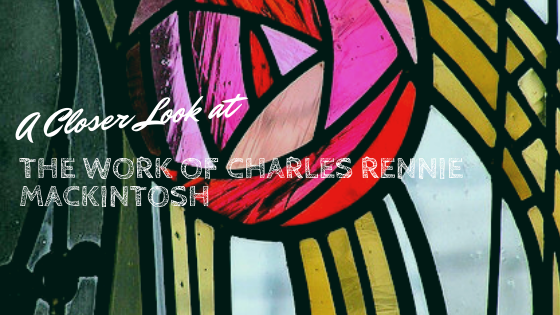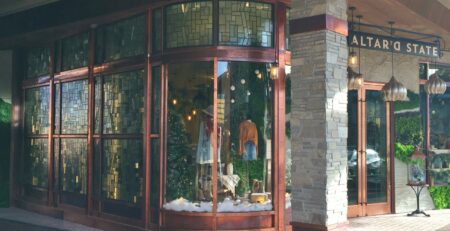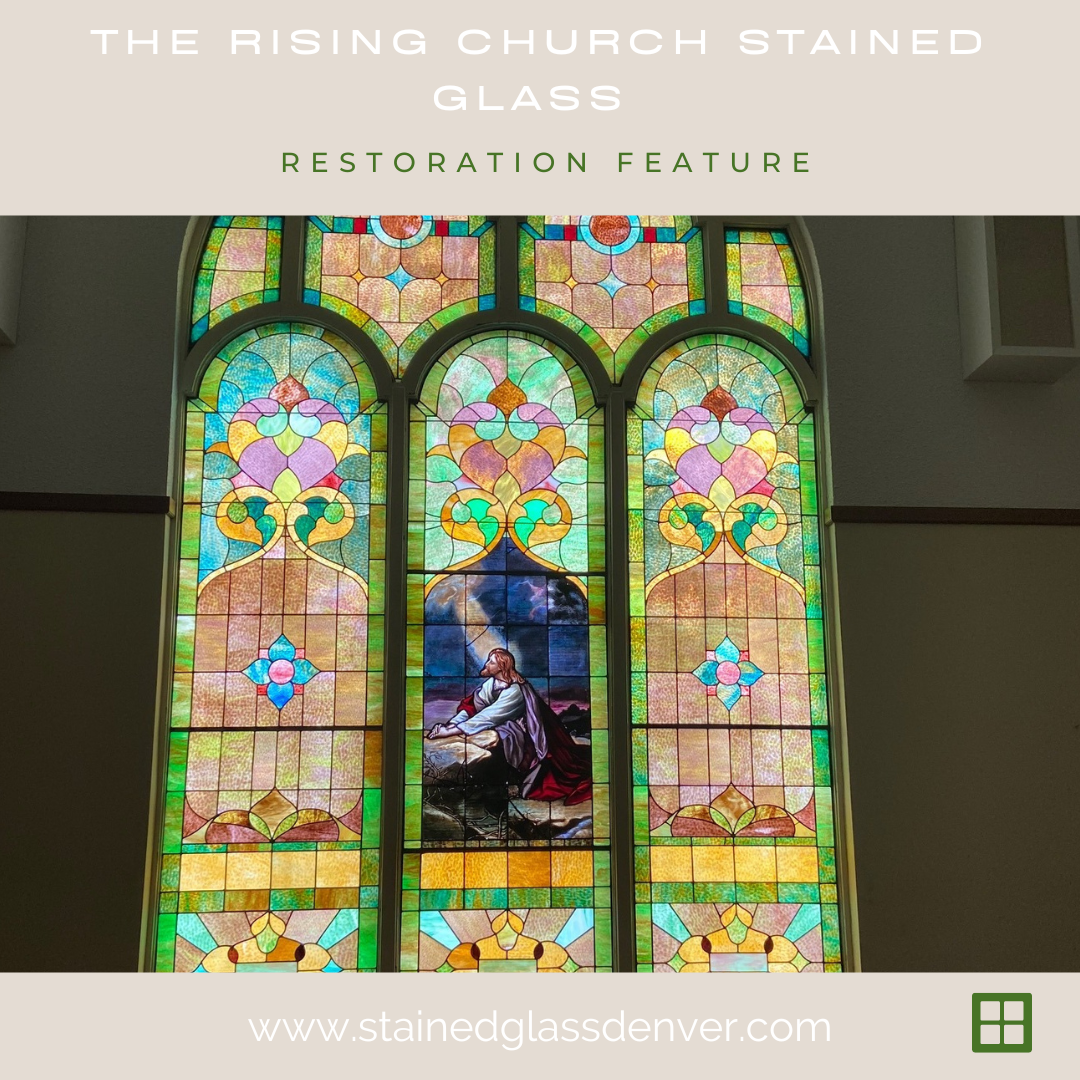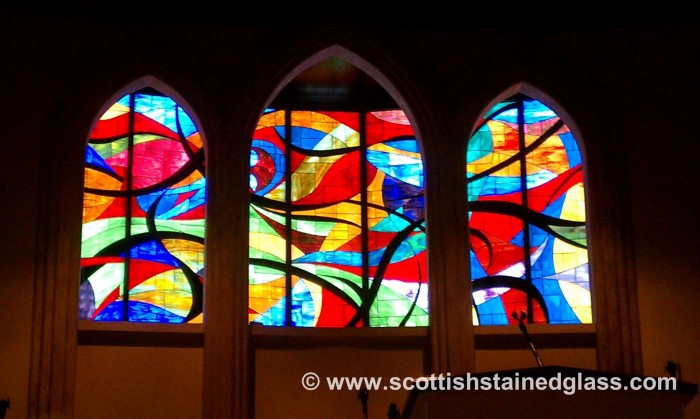Re-Leading Church Stained Glass
The glass in stained glass windows is quite resilient. In fact, it is thicker than normal window glass. Stained glass windows will endure a long time due to this. However, the leading of church stained glass windows is one of the areas that may weaken over time. Lead oxidizes when exposed to air and moisture, deteriorates with age, and becomes brittle over time. When the leading on church stained glass windows begins to deteriorate after 60-100 years, it should be re-leaded and restored as soon as possible because lead joints keep the windows together.
Re-Leading to Restore Stained Glass
Re-leading is the process of removing old lead and replacing it with new lead called caming. This is part of the process that we do for every restoration. It is a time-consuming process but the results are spectacular!
The Stained Glass Re-Leading Process
STEP 1: Removing the Stained Glass
We almost always have to remove the entire window in order for lead that has deteriorated over time to be replaced. Restoration is not the same as repair, which is a small drop-in fix. The window will then be taken to our studio after the structure has been removed from your Denver church.
STEP 2: Scanning the Glass Into the Computer
Once we get the stained glass to our studio we take a picture of it while it is still together so we know where each piece goes. This picture is fed into the computer so we can use it as a reference or a template if we need to recreate broken glass pieces
STEP 3: Disassembling the Stained Glass and Removing Old Lead
When we restore stained glass, we take it apart completely. This means that we must peel off all of the old lead and remove each piece of glass. We then carefully bathe every piece of glass in a specific solution to dissolve years of dirt and grime from it.
STEP 4: Re-Leading the Stained Glass
When the glass is clean, we put it back in place using the computer image from step 2. The new lead is then joined together by seams between the glass pieces. WE then solder it all together. Modern lead is not the same as old lead. Lead today has chemicals added to it that make it last longer than ever before, up to 200 years.
STEP 5: Re-Installing the Re-Leaded Stained Glass
This is our favorite step of the entire process! We return the stained glass window to the church and re-install it after we’ve replaced the lead and cracked glass. Depending on the requirements of the Denver church, we may apply a protective Low-E glass covering at this stage. At this point, the window has a completely different appearance than before. It’s bright, more vivid, and simply stunning. In addition to that, it will survive another 200 years before needing repair.
Contact us today to learn more about restoration for your Denver church stained glass.
